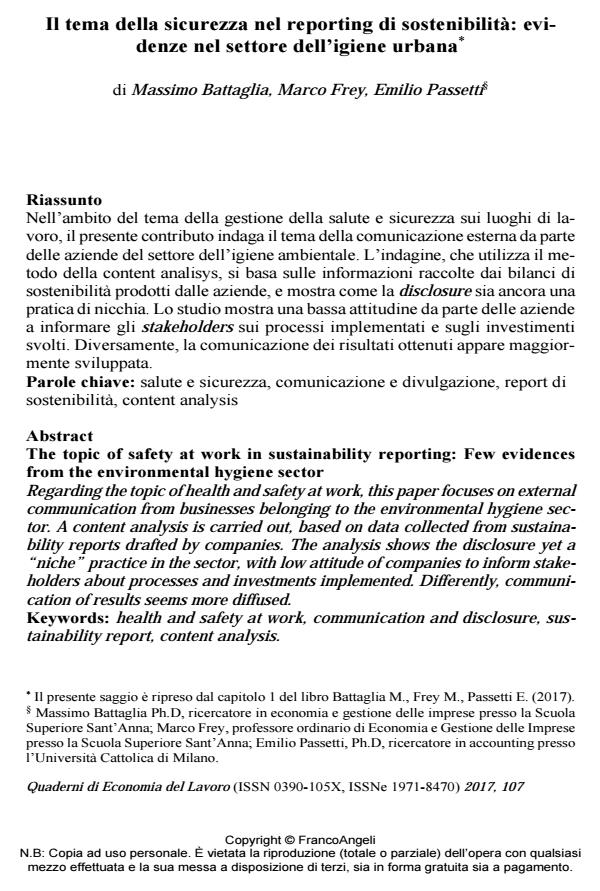Il tema della sicurezza nel reporting di sostenibilità: evidenze nel settore dell’igiene urbana
Titolo Rivista QUADERNI DI ECONOMIA DEL LAVORO
Autori/Curatori Massimo Battaglia, Marco Frey, Emilio Passetti
Anno di pubblicazione 2018 Fascicolo 2017/107
Lingua Italiano Numero pagine 26 P. 99-124 Dimensione file 226 KB
DOI 10.3280/QUA2017-107003
Il DOI è il codice a barre della proprietà intellettuale: per saperne di più
clicca qui
Qui sotto puoi vedere in anteprima la prima pagina di questo articolo.
Se questo articolo ti interessa, lo puoi acquistare (e scaricare in formato pdf) seguendo le facili indicazioni per acquistare il download credit. Acquista Download Credits per scaricare questo Articolo in formato PDF

FrancoAngeli è membro della Publishers International Linking Association, Inc (PILA)associazione indipendente e non profit per facilitare (attraverso i servizi tecnologici implementati da CrossRef.org) l’accesso degli studiosi ai contenuti digitali nelle pubblicazioni professionali e scientifiche
Nell’ambito del tema della gestione della salute e sicurezza sui luoghi di lavoro, il presente contributo indaga il tema della comunicazione esterna da parte delle aziende del settore dell’igiene ambientale. L’indagine, che utilizza il metodo della content analisys, si basa sulle informazioni raccolte dai bilanci di sostenibilità prodotti dalle aziende, e mostra come la disclosure sia ancora una pratica di nicchia. Lo studio mostra una bassa attitudine da parte delle aziende a informare gli stakeholders sui processi implementati e sugli investimenti svolti. Diversamente, la comunicazione dei risultati ottenuti appare maggiormente sviluppata.
Parole chiave:Salute e sicurezza, comunicazione e divulgazione, report di sostenibilità, content analysis
Massimo Battaglia, Marco Frey, Emilio Passetti, Il tema della sicurezza nel reporting di sostenibilità: evidenze nel settore dell’igiene urbana in "QUADERNI DI ECONOMIA DEL LAVORO" 107/2017, pp 99-124, DOI: 10.3280/QUA2017-107003